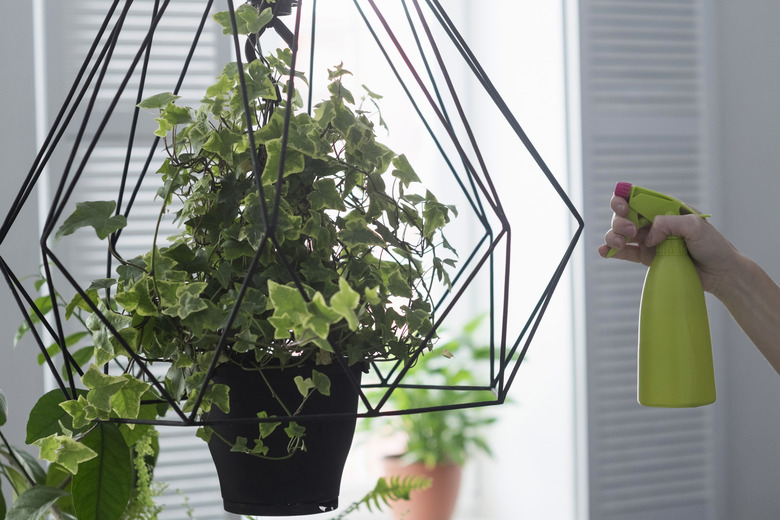How To Care For Hanging Ivy Plants
We may receive a commission on purchases made from links.
Ivy plants are popular both indoors and outdoors. Their climbing and cascading growth habit makes ivies a stunning way to fill a space with green leaves. English ivy (Hedera helix, U.S. Department of Agriculture plant hardiness zones 4 through 9) is one of the most common ivy varieties for personal cultivation and is ideal for houseplant beginners. These are fairly low-maintenance plants, but you can take a few steps to ensure they grow well and always look their best.
Placement of Ivy
Placement of Ivy
One of the reasons for the popularity of ivy (and English ivy in particular) as a houseplant is how adaptable it is to different conditions. While some level of bright light is preferred for optimal growth, most variegated ivy can stand being in slightly darker and more shady areas. Ivy also prefers mild temperatures and doesn't like to get too hot or too cool.
North- or east-facing windowsills are all good places to keep your indoor ivy plant. You can even purchase plant hangers to hold your ivy containers, which can be hung in front of a window to make the most of your plant's long, lush, hanging stems.
Care for Ivy
Care for Ivy
Ivy plants tend to prefer slightly moist soil. Any commercial potting mix should work well for ivy, although you should ensure your plant's roots have adequate drainage by selecting a pot with drainage holes in the base.
You should allow your ivy plant to dry slightly between waterings. The soil should feel dry to the touch to a depth of around 1/2 inch before you water. Ivy tends to prefer slightly higher levels of humidity too.
To get the most out of your ivy plant, fertilize your plant during the growing season. Use a nitrogen-rich water-soluble fertilizer once per month between March and November, or according to product-specific label directions. Don't fertilize during the dormant winter season.
Treating Ivy Pests
Treating Ivy Pests
Ivy houseplants can benefit from periodic rinsing to help remove any pests. Simply stand your plant in the shower and run the water for around 15 minutes. If you can see any visible mites or other pests, you can bring the water source closer to help knock them out of your plant.
For more serious infestations, you may need to remove them with a cotton swab dipped in alcohol. Avoid using insecticidal soap, because this product damages some ivy plants. You should also prune out any areas where your ivy looks seriously damaged.
Alongside small pests, you may notice brown leaf spots on your plant. Neem oil products can be effective against both pests and fungal leaf spot blights when used according to package directions.
Caring for Ivy Outdoors
Caring for Ivy Outdoors
Alongside their popularity as houseplants, most ivy species can thrive outdoors too. Ivy is a great outdoor plant to cover any eyesores in your garden, as it is a clinging, climbing plant. Outdoor ivy also has huge benefits for garden wildlife, providing a good source of pollen for bees and offering shelter to many smaller mammals and birds.
Ivies have good shade tolerance and can also climb up walls without any supporting structure. Ivy species are generally not fussy about their soil requirements and don't require a huge amount of pruning either.
It's worth noting that English ivy is not native to the United States and, in some regions, is considered an extremely invasive species. Check with your local county extension office before considering planting it in beds outdoors. It may be a better idea to grow your English ivy outdoors in hanging baskets, as roots can escape through drainage holes of pots stored on the ground.
